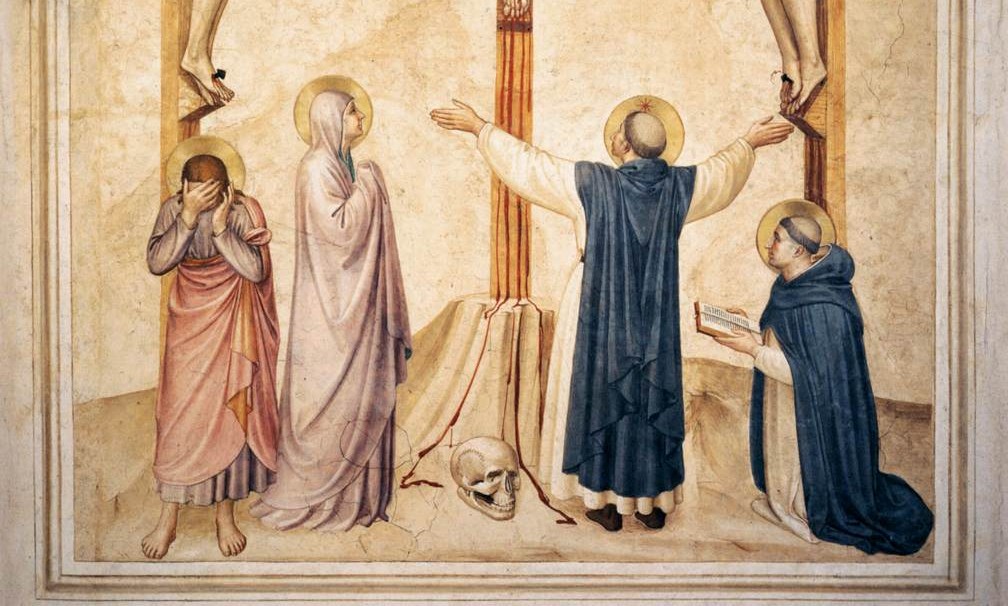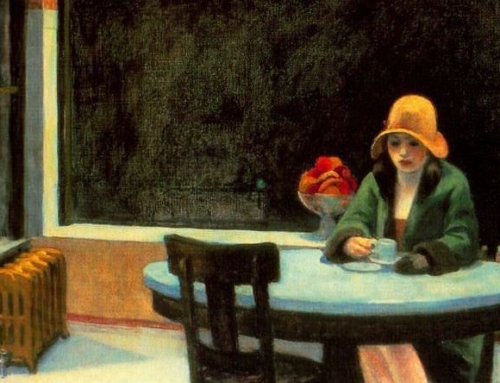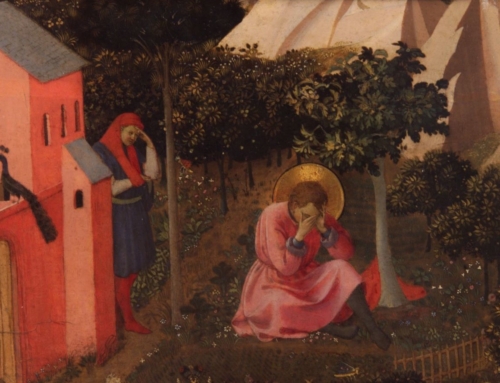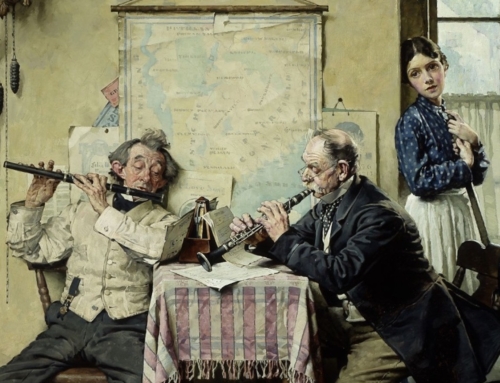Is it right to mourn? In this country, innocent babies are slaughtered daily with the consent of the law and the smiling tolerance of lawmakers. The state has removed the family from its privileged position, casting aside the rights of children in favor of the pleasures of adults. And these are just the more grievous threats to human dignity. Mourning is indeed a right response to such evils, but we must mourn as Christians.
Joseph Ratzinger, in the discussion of the Beatitudes in his Jesus of Nazareth, recalls the story of the six “scourges of the city” in Ezekiel 9. God shows Ezekiel a vision of “all the idols of the house of Israel,” before which stand “seventy of the elders of the house of Israel” offering worship (Ez 9:10-11). Thus, the Lord declares: “The land is filled with bloodshed, the city with lawlessness. They think that the LORD has abandoned the land, that he does not see them” (Ez 9:9). In His mercy, the Lord commands that one of His servants “mark an X on the foreheads of those who grieve and lament over all the abominations practiced within [the city]” (Ez 9:4). He then commands His six servants: “Old and young, male and female, women and children—wipe them out! But do not touch anyone marked with the X” (Ez 9:6). It is in those marked with the X that Ratzinger sees the mourners of the second Beatitude. Mourners who are blessed suffer under an evil regime but refuse to conform to its demands, even though the only resistance they can offer is to mourn.
Ratzinger uses a New Testament example to illustrate that one must distinguish the mourning of Judas from the mourning of Peter. Both see and mourn their own evil acts. Judas “no longer dares to hope” and destroys himself; Peter “bursts into healing tears … and is himself renewed” (vol. 1, p. 86). It is in the latter mourning that we see the grace of God at work: Peter humbly submits to the yoke of hope and opens himself to God’s healing action. Blessed mourning must recognise evil without losing hope in the final triumph of God.
This triumph is shown most clearly in the victory of the Cross. Here, evil reaches its peak and takes God Himself into the realm of death. Mary, John, and a few others stand by and can do nothing but mourn. Like those marked with the X, these disciples refuse to conform to the crowd and instead mourn the evil they see. But their mourning goes beyond protest and, indeed, attains to the proclamation of the truth: this here is evil. And this truth the world does not wish to hear, so they are pushed aside, a small group huddled beneath the Cross, unnoticed save by the Lord Himself. They cling to the truth in hope, and God does not abandon His people: He shatters the chains of death and turns their “mourning into joy” (Jer 31:13).
Our land is filled with bloodshed, our cities with lawlessness. Let us grieve and lament over these abominations, but let us do so blessedly. Let us mourn with compassion for all those who will suffer the results of these evils, even if now they celebrate in their confusion. Let us, with Peter, mourn our own sins, our steps away from the foot of the Cross and into the conformity of the crowd. But let us mourn with hope, for we know what follows the Cross. Let us be mourners marked with an X, the sign of the Cross on our foreheads—and we shall be comforted.
✠
Image: Bl. Fra Angelico, Mourners with Crucifixion (with Sts. Dominic and Thomas Aquinas)







